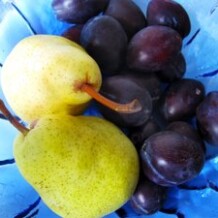Kidney Disease Diet Depends On The Type Of Kidney Disease
|

|
There really isn’t something called the one and only Kidney Disease Diet for every type of kidney disease.
Different types of kidney disease necessitate the type of diet you’re on if you do have kidney disorders.
For example, these are some of the types of kidney disease:
• Stage 1, 2, 3, or 4 kidney disease associated with diabetes
• Kidney stones – calcium oxalate, urate stones, silicate stones
• Polycystic Kidney disease
• Kidney disease initiated by high blood pressure
• Glomerular diseases of the kidney
Stage 1 Through 4 Kidney Disease Associated With Diabetes
Each of these diets has a very specific meal plan to go with it. Stage 1 and 2 kidney disease meal plans are basically ones where you watch your sodium and potassium levels. The kidney has different functions in the body, and one of them is related to the regulation of sodium and potassium found in your blood. This is why you may be told to decrease your sodium consumption and increase your potassium levels. The standard DASH diet which limits sodium levels to 1500 mg or 2000 mg daily may be one your doctor or dietitian recommends for you when you have Stage 1 or 2 Kidney Disease and are diabetic.
However, as diabetes progresses to Stage 3 and Stage 4 kidney disease, the diet gets more restrictive, as it’s considered pre-dialysis. The phosphorus levels have to be monitored and animal protein, which is high in phosphorus and protein, may be limited, too. This means that you’ll only be taking in 2 oz. protein per meal, staying away from all high sodium foods, and also avoiding foods high in potassium.
Dialysis Kidney Disease Diet
Stage 5 kidney disease is for those who get dialysis or for those waiting for a kidney transplant and again, it’s a diet even more restrictive.
Dialysis diets differ in how the dialysis is performed. If the blood is cleaned through hemodialysis equipment, then the diet is officially called a hemodialysis diet. Fluid is restricted on this diet and each case is different as to how much is allowed. Other restrictions include sodium, phosphorus and potassium. The body has a difficult time filtering out the phosphorus when a person is on hemodialysis.
If the blood is cleaned through medical equipment attached to the abdomen, the diet is called a peritoneal dialysis diet. This diet differs from the hemodialysis diet because you’re allowed to eat more protein on it and high potassium foods such as oranges and bananas are allowed. Phosphorus is also limited, and depending on your blood pressure, sodium may also be restricted.
Pages: 1 2
|
Follow this site
|



















Recent Comments